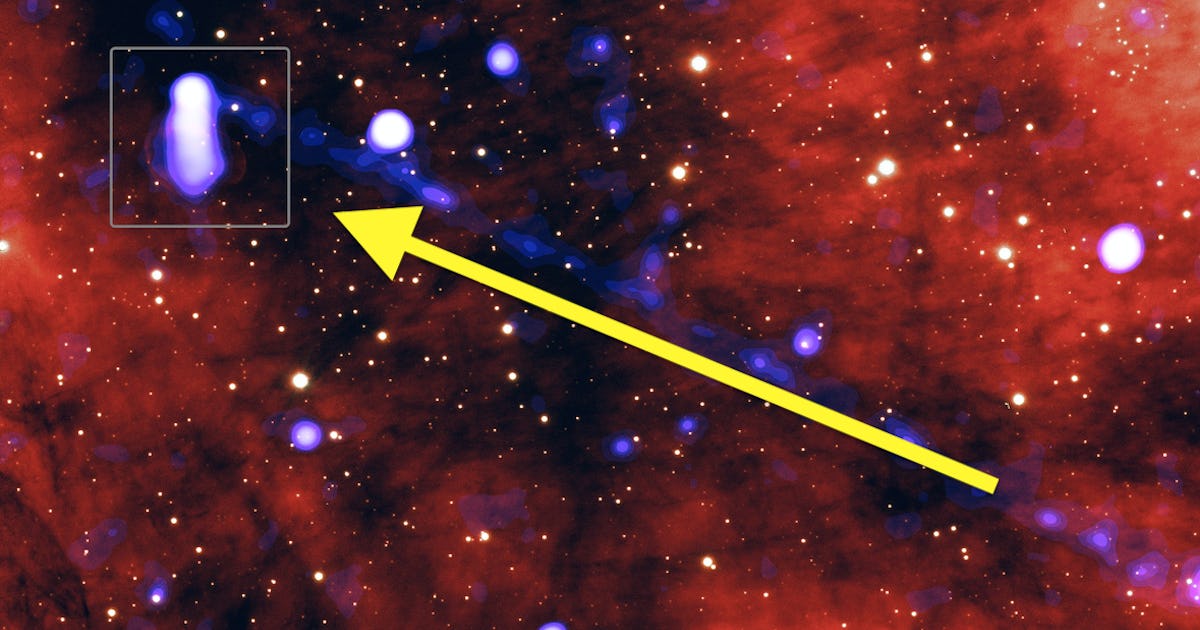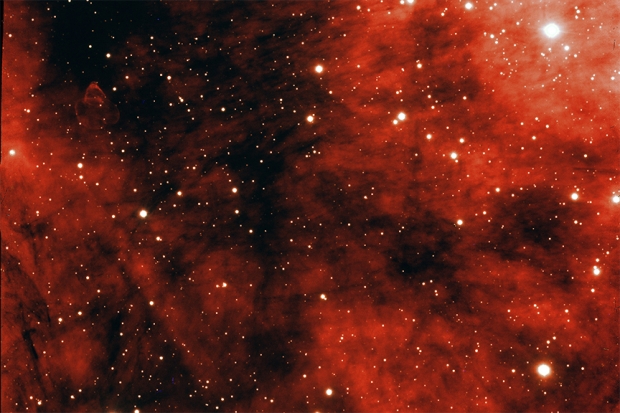In the universe, size does not always make a difference. The smallest of things may sometimes put on tremendous exhibitions that stretch billions of kilometers. Astronomers awhile back captured images of a massive beam of matter and antimatter erupting from a small, twirling disintegrated star. The beam is almost 40 trillion miles in length, making it the largest ever recorded from a pulsar star. A pulsar is a rapidly spinning neutron star or the super-dense remnants of a star that erupted in a supernova explosion. As the star rotates, it emits electromagnetic radiation in the form of dazzling, narrow beams that travel throughout the galaxy in a circular pattern.
The beam was discovered in 2020, but scientists were unable to establish its exact length since it stretched beyond the limits of the Chandra sensor. The record-breaking beam is the biggest ever observed emanating from a pulsar. However, when scientists returned to examine the star using the Chandra X-ray Observation Deck in February and November 2021, they discovered that the beam was three times as massive as they had previously thought. Although the vast majority of the cosmos is composed of ordinary matter, scientists have identified a large number of subatomic particles in detectors on Earth, but they are unsure of the origin of these positions.

Pulsar winds include particles trapped by their intense magnetic fields, and as the pulsar moves across space, the wind follows behind all this. A gaseous bow shockwave passes in front of the pulsar. In gamma-ray light, scientists have previously discovered huge halos surrounding close pulsars. This shows that powerful positrons have a tough time seeping out into the galaxy in particular. This calls into question the hypothesis that pulsars are responsible for the positron excess seen by scientists. However, newly found pulsar filaments reveal that particles can travel into intergalactic space and possibly reach Earth.

“It’s astounding that a pulsar about 10 miles square can build a superstructure so large that we can see it from thousands of light-years beyond, explained Martijn de Vries, who conducted the research at Stanford University in Palo Alto, California. To the same relative size, the pulsar would be around 100 orders of magnitude lower than the smallest item visible to the human eye if the strand extended from New York to Los Angeles.”


